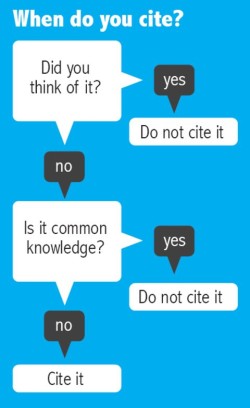 Plagiarism is more than a deadly sin: it is a crime. If you get caught plagiarizing in junior high, for example, the least you can expect is a zero on the project or paper and probably a meeting with your parents. Get caught in college, you will likely get expelled — and what college or company will want you after that? Many schools now require that papers be put through a plagiarism checker before they are even accepted. I have never used one, but I have caught a few students plagiarizing by entering a string of their words into a search engine — the “old fashioned” way of catching a plagiarist. I am pretty sure, however, that I missed quite a few. You can really tell when a student is writing about a certain book that he or she has read, and the writing is way above that student’s ability and likely comes from Amazon or the book jacket — or perhaps, in some cases, was simply written by a parent.
Plagiarism is more than a deadly sin: it is a crime. If you get caught plagiarizing in junior high, for example, the least you can expect is a zero on the project or paper and probably a meeting with your parents. Get caught in college, you will likely get expelled — and what college or company will want you after that? Many schools now require that papers be put through a plagiarism checker before they are even accepted. I have never used one, but I have caught a few students plagiarizing by entering a string of their words into a search engine — the “old fashioned” way of catching a plagiarist. I am pretty sure, however, that I missed quite a few. You can really tell when a student is writing about a certain book that he or she has read, and the writing is way above that student’s ability and likely comes from Amazon or the book jacket — or perhaps, in some cases, was simply written by a parent.
Technology has made plagiarism very easy. No longer must we diligently copy someone else’s words. Now we can simply cut and paste them . . . sometimes a student doesn’t even change the font, even when it doesn’t match the rest of the paper (how careless and lazy!) And yes, I have had students deny that they copied even when I show them a printout from the Internet that matches their paper exactly!
What is plagiarism ?
Plagiarism is taking someone else’s words or ideas and passing them off as your own without giving credit to the source. There are a number of different levels of plagiarism:
1. Copy and paste. Of course this is plagiarism. There is no attempt here to even change the wording. You can certainly copy someone’s words if you give credit to them and quote them. There are a number of ways to give credit:
- Incorporate it into the writing: According to Dr. Peter Jones, in his 1980 study . . .
- Use an in-text citation in parentheses next to the passage.
- Use footnotes
- Use notes at the end of the writing
- And have a Works Cited list or Bibliography
2. Changing some words around. Still plagiarism. You cannot write basically the same thing as someone else and change every third word; this is still plagiarism, and the source needs to be cited. So you might not even bother to change the words. Just quote the original and give them credit.
3. Following the main gist of the passage, but changing the sentences. This is a bit more involved that #2. This type of plagiarism is keeping pretty much the same structure as something that is already written, but changing the sentences. It still says the same thing, and it still is not your original idea. Credit must be given. This type of plagiarism is probably the most common because people don’t think it is plagiarism. I am sure I am guilty of it myself (ouch!).
4. Paraphrasing is rewriting someone’s thoughts and ideas into your own words. Nice to do, but if it isn’t your idea, it’s plagiarism, so cite it. For example, you might read an article. You might then put it into your own words, perhaps a third of the length and completely different in paragraph and sentence structure — but not in idea. Cite it.
5. Just plain using someone’s ideas without developing your own and not giving credit to them. If it is someone else’s idea and you steal it without giving credit, you are plagiarizing.
What about common knowledge? Using common knowledge is NOT plagiarizing. For example, I do not give credit in my grammar books because grammar is common knowledge. No one person has the idea of what the subject of a sentence is. Historical facts, such as dates, are common also knowledge. Math formulae are common knowledge. However, if someone has a new idea about a historical event, or a new and novel math formula, that is an original idea and not common knowledge.
I would hate to not give credit in this article to where my information came from. Here are the links to some good information about plagiarism. And . . . be careful! Use safe text.
University of North Caroline Writing Center
Purdue University Online Writing Lab (OWL)



Isn’t this whole article an example of plagiarism? In the ‘method’ of # 3 above? :-} [with the sources included, of course].
I did include sources that you can even go to and read….
Weird usage. Calling plagiarism a problem in grammar is like calling bank robbery a problem in bookkeeping. Plagiarism is theft, not more, not less.
You are right. I should have called the series the 7 Deadly Sins of Writing. Me bad!
What do you suggest in a situation where someone presented and published someone else’s assignment under his/her name?
Is this an academic situation? It depends on the grade. College is different from high school is different from grade school.
Thanks. I’m going to cut&paste this to my blog right now!
That will be ten years or a fine of $500,000! Seriously, I don’t care as long as you give me credit and put a link to my site!
Plagiarism strikes fear in my heart. I’m always worried that some great idea I’ve conjured up is really something I’ve read or heard about in the past. Your #4 should wake many of us up. Safety from plagiarism doesn’t happen because the words are rearranged. It’s the idea that must not be stolen with out giving due credit. Thanks for the succinct reminder.
You’re welcome! And are there any original ideas left????